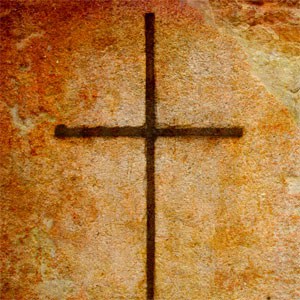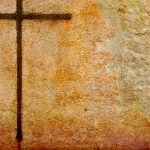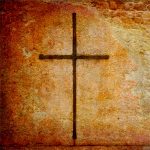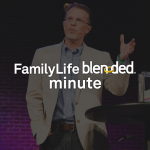
Remembering Christ’s Death and Resurrection
Is the gospel the focus of your Easter celebration? Barbara Rainey reminds us that Easter is a perfect time to proclaim your faith to believers as well as nonbelievers as they visit your home during the Lenten season. A great way to do that is through “Behold the Lamb,” an interactive devotional Barbara created designed to teach your children who Jesus is. Consisting of an artfully designed wreath featuring a lamb and the words, “I AM,” this resource explores the eight “I AM” statements Jesus made about himself in John.
Show Notes
About the Host
About the Guest
-
Is the gospel the focus of your Easter celebration? Barbara Rainey reminds us that Easter is a perfect time to proclaim your faith to believers as well as nonbelievers as they visit your home during the Lenten season. A great way to do that is through “Behold the Lamb,” an interactive devotional Barbara created designed to teach your children who Jesus is. Consisting of an artfully designed wreath featuring a lamb and the words, “I AM,” this resource explores the eight “I AM” statements Jesus made about himself in John.
-
Dave and Ann Wilson
Dave and Ann Wilson are hosts of FamilyLife Today®, FamilyLife’s nationally-syndicated radio program. Dave and Ann have been married for more than 38 years and have spent the last 33 teaching and mentoring couples and parents across the country. They have been featured speakers at FamilyLife’s Weekend to Remember® marriage getaway since 1993 and have also hosted their own marriage conferences across the country. Cofounders of Kensington Church—a national, multicampus church that hosts more than 14,000 visitors every weekend—the Wilsons are the creative force behind DVD teaching series Rock Your Marriage and The Survival Guide To Parenting, as well as authors of the recently released book Vertical Marriage (Zondervan, 2019). Dave is a graduate of the International School of Theology, where he received a Master of Divinity degree. A Ball State University Hall of Fame quarterback, Dave served the Detroit Lions as chaplain for 33 years. Ann attended the University of Kentucky. She has been active alongside Dave in ministry as a speaker, writer, small-group leader, and mentor to countless wives of professional athletes. The Wilsons live in the Detroit area. They have three grown sons, CJ, Austin, and Cody, three daughters-in-law, and a growing number of grandchildren.
-

Barbara Rainey
After graduating from the University of Arkansas with a Bachelor of Arts degree in history, Barbara joined the staff of Cru® in 1971. With her husband Dennis, whom she married in 1972, the Rainey’s cofounded FamilyLife®, a ministry committed to helping marriages and families survive and thrive in our generation. Barbara is a frequent speaker and guest on FamilyLife Today®, FamilyLife’s award-winning nationally-syndicated daily radio broadcast. She is the author or coauthor of...more
Is the gospel the focus of your Easter celebration?
Remembering Christ’s Death and Resurrection
Bob: On a scale of 1 to 10, if Christmas, in our culture, is a 10, what number would you give to Easter? For that matter, as Christians, if we celebrate Christmas at a 10, what number would you give to Christians for how we celebrate Easter? Here’s Barbara Rainey.
Barbara: We do bunnies and we do Easter egg hunts—and there’s nothing wrong with Easter egg hunts—but we just don’t do very much. I feel like it’s a big gap—it’s a big hole in our Christian calendar. Quite honestly, we should be celebrating the Resurrection like we celebrate Super Bowl Sunday. We should have stadiums; and people should be on their feet, with their hands lifted, cheering over the miracle of the Resurrection!
Bob: This is FamilyLife Today for Monday, February 18th. Our host is the President of FamilyLife®, Dennis Rainey, and I'm Bob Lepine. We’re going to talk about some ways that families can heighten the importance of Easter during the Lenten season this year—ways that you can get ready for a more glorious Resurrection celebration. Stay tuned.
And welcome to FamilyLife Today. Thanks for joining us. Do you have a little room at the house that’s kind of your room for projects you’re working on—you know, a little shop room or something, where—?
Dennis: I used to.
Bob: Did you?
Dennis: Yes, but Barbara overtook it with all of her projects. [Laughter]
Bob: That’s what I was wondering. I keep seeing Barbara show up here with, “Look at this thing I’ve been working on here.” I’m thinking, “Your house must just be—” [Laughter]
Dennis: We had a playroom at one time, Bob—that we had a ping pong table in there and—
Barbara: —a foosball machine.
Dennis: —and a cheap foosball machine we bought at a garage sale, but those are long-gone. There’s no room for them!
Bob: Completely covered by Barbara Rainey.
Dennis: I have never seen my wife work harder on anything, other than being a mom and a wife, than what I have seen in the last two years. She has been going flat-out!
Bob: And, by the way, welcome back to FamilyLife Today.
Barbara: Thanks, Bob.
Bob: What has gotten into you?
Barbara: Well, I’ve had some ideas; and I finally have the freedom, in the empty nest years, to be able to see if they work. As of today, we know that they work because the “Adorenaments”® were the first test. The “Adorenaments” were wildly successful in Christmas of 2012.
Bob: These were the Christmas tree ornaments, that you designed, with names of Jesus—that we ordered a bunch and—
Dennis: —sold out.
Bob and Barbara: We should have ordered more! [Laughter]
Dennis: You know, I have to tell a funny story because a friend of mine had just visited Colorado Springs. Evidently, they were calling Dr. Dobson and Focus on the Family®, ordering “Adorenaments”. They didn’t have any because Barbara had created them and only FamilyLife had them, but it was really funny that other ministries were getting phone calls for “Adorenaments”.
Bob: And, then, we’ve got a lot of families, right now, who are going through this new resource you’ve created for the Lenten season called “The Messiah Mystery”™.
Barbara: Yes, that’s right.
Bob: It’s a devotional that families can go through that show them the Old Testament clues about the Messiah. It’s a lot of fun, and we’re hearing back from folks who are using that. That’s exciting; and now, you show up today—and you’ve got something new you’ve been working on.
Barbara: Well, we have to celebrate Easter. Without Easter, we have nothing.
Bob: Right.
Barbara: So, the whole purpose of Lent is to prepare our hearts to celebrate the resurrection of Jesus Christ. What we have—after you finish your Lenten experience—“The Messiah Mystery” with your family—then, you spend Holy Week preparing for Easter Sunday—for Resurrection Sunday. This resource, that I’m really excited about, is talking about what Jesus went through His last week of life. It also is helping your children and we, as parents, too, learn about what Jesus said about Himself.
In the book of John, Jesus makes all of His “I AM” statements that He made while He was on earth. They’re all in that one book: “I am the Bread of Life,” “I am the Light of the World,” “I am the True Vine,” “I am the Good Shepherd,” and so on. I thought: “Wow! That would be a great way to talk about what Jesus did and why He came and Who He is in a very simple way and take children—and parents, for that matter, because this is as much for parents as it is for kids—but to take the family through those statements that He made about Himself—that tell us clues about Who He is and what He came to do.”
Dennis: Barbara, you pound the table, uniquely, about Easter. You really feel like it’s an important holiday for followers of Christ to celebrate the truth about the life, death, burial, and resurrection of Jesus Christ.
Barbara: Yes, I do. It’s been interesting, as I’ve thought about it, that we spend so much time, and so much money, and so much effort celebrating Christmas. Christmas is worthy of our great celebrations. But, by comparison, we spend very little time, very little money, very little energy, very little effort preparing for and celebrating Easter.
So often, it’s just a little bit grander a church service, perhaps; and then, you go home and same-old, same-old. Maybe, you wear new clothes; but other than that, what do we do? There’s very little available to help us, as families, know how to truly celebrate the miraculous event that the Resurrection is. I wanted to do that when we were raising our kids, but I couldn’t find anything. I couldn’t figure out how I could help my kids understand the grandeur. I mean, quite honestly, we should be celebrating the Resurrection like we celebrate Super Bowl Sunday. We should have stadiums; and people should be on their feet, with their hands lifted, cheering over the miracle of the Resurrection!
Dennis: Yes, yes.
Barbara: But we do bunnies and we do Easter egg hunts—and there’s nothing wrong with Easter egg hunts because we have “Rez Eggs”. [Laughter]
Bob: Especially—I was going to say, “—especially, if you use Resurrection Eggs®!”
Barbara: And Rez Eggs are wonderful—I’m all for “Rez Eggs” —but we just don’t do very much. I feel like it’s a big gap—it’s a big hole in our Christian calendar and the events that we celebrate, as families. I think there’s so much more that can be done to help families—and parents, too—celebrate the Resurrection.
Bob: Okay, so most of the time—if somebody was meditating on particular passages of Scripture—like the “I AM” statements from John’s Gospel that you mentioned—and they said, “We’re going to make an effort to focus on this during Holy Week,”—then, they might write some blog posts or sit down and share a devotional around that. But you kind of used that as a starting point to create something that is going to be a focal point, in your home, during that time of year.
Barbara: Yes.
Bob: So explain why you don’t just write out some blog posts.
Barbara: Write a book?
Bob: Yes, write a book.
Barbara: I think because there’s a real important principle for us, as believers; and that’s for us to proclaim our faith. We don’t just proclaim our faith “out there” to strangers. We need to proclaim our faith to our children. We need to proclaim our faith in our homes. People come by our homes—people see what we do at home. If it’s just in a book, it’s somewhat hidden. I think it’s a great opportunity for us to teach our kids truth but also have a way to display that truth that we’re teaching them.
Plus, when you’re working with kids, the more interactive a resource can be—it’s not just them listening passively—the more they’re going to get it. So, the resource that I’ve created—that we’re talking about today—“Behold the Lamb”— it has good material to read to your kids, but there’s an activity. You take the card, and you put it on a wreath. The wreath is displayed in your home so that, throughout the whole week of Easter, that’s the focal point—not bunnies, not brightly-colored eggs, or whatever you might have as your celebration for Easter. There is something in your home that is declaring what is most important for you, and for your family, during Easter week.
Bob: This is the first time I’ve ever heard of an Easter wreath. I mean, I’ve heard of Christmas wreaths—although, I guess wreaths are kind of popping up—all the time, everywhere, anymore—aren’t they?
Barbara: Yes. Everybody knows what a wreath is. Initially, what I wanted to do was to create something that we can put on our front door because I want something on my front door that declares that, “I’m a believer,”—during Easter week. And I want anybody who comes by to know that’s what I believe. So, initially, I wanted to do a wreath that would hang outside. This one is not—although it could be because it’s not going to be damaged by weather—but it’s really not meant to be used outside.
Bob: Explain what it looks like. As you said, it could be attached to a nail on the front door.
Barbara: Yes.
Bob: Is this kind of a wrought iron? Is that what you’d call it?
Barbara: It’s metal.
Bob: Okay.
Barbara: So it’s not breakable. I’m really big on creating things that kids can use that they’re not afraid—parents aren’t afraid they’re going to break—kids aren’t worried about breaking them. It’s metal. To describe it—I think a lot of women listening will understand what I mean—it’s like a card holder. The wreath, itself, is a series of circles that go all of the way around; but the circles are tightly-connected.
Bob: Okay.
Barbara: For instance, I’ve seen wreaths similar to this—or I’ve seen this kind of a design in other shapes—not necessarily a wreath shape. You can buy them to put photographs in, or to put birthday cards in, or to put your Christmas cards in. It’s the same concept. It’s a “paper holder” for lack of a better word because the concentric rings will hold a sheet of paper, will hold a photograph, will hold a card.
Bob: But your idea is not to put photographs or Easter cards in.
Barbara: Correct.
Bob: You’ve created something that goes in the card holders.
Barbara: Exactly. The wreath has a stand that you can put on your table, on your counter, or you can take the stand off and—there’s a hook—you can hang it on your wall. The wreath also comes with a centerpiece. The centerpiece is really important for this “Behold the Lamb” product because it says in the center of the wreath, “I AM”. On the top of the “I AM”, there is a lamb.
Bob: Yes.
Barbara: That’s a really important starting place for talking about what Jesus declared to us in all of his “I AM” statements.
Dennis: Yes. Let’s just talk about this for a moment because the first card that you pull out of a burlap pouch—that is entitled “Behold the Lamb.” You’ve got—it looks like about eight cards, in addition to this introductory card.
Barbara: That’s right.
Dennis: You’ve ask the question: “Who is ‘I AM’?” What this is meant to do is explain to you, or explain to your kids, what the origins are of God introducing Himself by saying, “I AM.” Explain what you’ve written about here.
Barbara: Well, in the Old Testament, there’s the story that many of our listeners will recognize—of Moses, when he encountered God in the burning bush. As the story goes, in Exodus, God began speaking to Moses. After they had this little conversation, Moses said, “What is your name?” If you think about it, when you first meet someone, what is one of the first things that you ask? “What is your name?” God was speaking to Moses; and Moses, logically, wanted to know, “What is your name?”
Bob: Yes, “What do I call You? Who are You?”
Barbara: Yes. “Who are You? How do I address You?” We all address one another by our names. The answer that God gave him is, “I AM”. Then, the dialogue continued; but God identified Himself, first, to Moses by the name, “I AM”—which is an interesting name. There’s a lot that we could talk about why God called Himself “I AM”; but the link to Easter is that Jesus identified Himself with that name when He was on earth by saying, “I AM.” He said, “I am the Messiah,” “I am the Bread of Life,” “I am the Light of the World.” He made other “I AM” statements about Who He was that further explained to His listeners, and to us, what the concept of God as “I AM” means, practically, to us.
Bob: Have you tried to connect theses specific “I AM” statements to the events that took place during Holy Week—the triumphal entry, and the overturning of the money-changers in the temple, and all of that going on?
Barbara: Yes. It isn’t exactly perfect, but we’ve taken the “I AM” statements and followed them through chronologically, as much as we can. In these cards, the idea is that you read together about what the “I AM” statement means. Then, you will begin with the very first card, which is for Palm Sunday. You’ll pull the card out for Palm Sunday. The first statement is the story in John 4 when Jesus said to the woman at the well, “I am the Messiah.”
You read about what that meant and why Jesus said that; but there’s also an additional story, on this card, that talks about what Jesus did on Palm Sunday—about His triumphal entry, and why He came on a donkey, and what that meant. So, as you read about His statement that He made about Himself, you’re also learning about Palm Sunday, and the significance of that day, and the significance of what He did on that day.
Bob: So once you read the card to your family, as a devotional, then, you attach the card on the wreath?
Barbara: There are some questions that you can interact on, as a family.
Bob: Okay.
Barbara: After you finish it, then, you know, have one of the kids take it and stick it on the wreath. As the week progresses, the wreath gradually fills up with cards. Each one—on the front of the card—has a statement that Jesus made about Himself: “I am the Messiah,” “I am the Bread of Life,” etc.
Bob: This is the first time I’ve seen a wreath like this—with a wreath stand like you’ve got. Is that common? I mean, have you seen a lot of these?
Barbara: I think most wreaths are hung on doors, or on walls, or on fireplaces; but I have seen a few—not many, though.
Bob: I really like it. It is a cool tabletop—I think, sometimes, “Do you really want to put a nail in the wall and then have to—?”
Barbara: You don’t always!
Bob: But here, you can put it on top of an end table or a dining room table.
Dennis: Yes, and it’s elegant. It’s really beautiful. Of course, that doesn’t surprise me—that’s what Barbara likes to create—something beautiful. It is 30 inches—almost 30 inches tall and 16 inches wide. It really is a centerpiece. It’s why you’re making the observation you’re making, Bob, because it is a bold statement. I don’t really know exactly how tall the statement is—in the middle—that says, “I AM”. It is close to three inches or maybe four inches tall. It’s meant to be the centerpiece, as you fill it in with all these various claims that Christ made about Himself.
I’m just sitting back here, thinking about the Bible. What an interesting book! Written over 2,000 years by dozens of different authors; and here is God, connecting Himself with Moses—introducing Himself as the pre-existent One—One who had no beginning and no end. He’s just: “I AM. I’ve always been here. I always will be. I AM. That’s Who I AM.”
Barbara: Yes.
Dennis: And then, Jesus becomes flesh and dwells among us. He fills in the blanks about what the “I AM” really means. You really have a chance here—and you might want to comment on this, Barbara. I know one of your goals is really to introduce your children to Who Jesus Christ is, what He came to do, and what that means to them.
Barbara: Well, it is; and it is also because I think we, as believers, don’t know how to celebrate Easter. What a great way to celebrate Holy Week. We know it’s important. We know it has great significance, but how can we communicate that significance—the weightiness of what Christ did for us—to our children?
By having a very short little piece that you read every day, and you talk about one name of Christ, you’re teaching them who Jesus is—you’re teaching them what He came to do. Hopefully, for some families, their kids will receive Christ, as a result of learning about Who Jesus is. They’ll go, “Oh, I want to know Him like Moses knew Him and like my parents know Him.”
Bob: For years, our listeners have heard us talk about the resource that we developed called the Resurrection Eggs. We’ve already mentioned those. You’ve used those.
Barbara: Yes.
Bob: Those are primarily aimed at early elementary and below.
Barbara: Yes.
Bob: I’m thinking two, to seven, or eight.
Barbara: Right.
Bob: This is something that you can use with elementary, junior high, senior high—everybody in the family can get engaged.
Barbara: Yes.
Bob: That’s part of the reason why you wanted something like this; right?
Barbara: Exactly, because Resurrection Eggs are fabulous for preschoolers and early elementary-aged kids; but we haven’t had anything for older elementary kids and teenagers—even adults, for that matter. What I love about this is that Resurrection Eggs are great for little kids; but then, this is something they can graduate to because our knowledge of Christ needs to grow.
Bob: So, if you had kids at home who were four, and seven, and nine, and thirteen, would you have both resources? How would you use them together?
Barbara: I think you could easily do both resources. You might want to do something with your four-year-old if your elementary kids feel like they’re too grown up for it, or you may have your elementary kids help lead your four-year-old through Resurrection Eggs, and have them be the ones to kind of help teach and lead. That will engage them and help them be involved. We tested this resource last spring. We had families who did have kids in that age range—the youngest was four, and the oldest was thirteen. Even the four-year-olds, in some of these families, were able to engage in this.
I would say, do Resurrection Eggs with your younger ones; but include your younger ones in doing this resource, too, because in this one, as I’ve done with other resources we’ve created, we have the bold font for younger kids and then the regular font for teenagers and adults. There is a portion that you can read, if you have younger children, that is much shorter and much simpler.
Dennis: I’ll just add a personal testimony to this. Last Easter, we spent Easter holiday with some of our grandkids. We had this kind of mocked-up. It was nice and warm out on the porch. I had some of my grandkids out there. As I recall, we had some that were three years old, who were sitting there listening to Papa talk about Jesus Christ being the “I AM”. I didn’t finish all eight of the cards because we weren’t together from Palm Sunday all the way to Resurrection Sunday, but we were able to go through several of the cards. In the process, my grandkids began to get the idea: “Who is this Messiah?” “Who is the Light of the World?” “Who is the Door?” “...the Bread of Life?”
Barbara: Yes.
Dennis: It’s a great way for parents or grandparents to introduce their kids and grandkids to Who the Savior is.
Bob: This is the point where I wish that we could build into car dashboards—right above the radio—a little screen so that they could see what we are talking about.
Barbara: Yes.
Dennis: Right.
Bob: Because you really do need to see this wreath to understand it, and appreciate what it’s been made to do, and how it’s been put together. I think folks are going to be really impressed by how elegant it is. You used that word, and I think that’s right. I don’t think there is anybody who would think, “I don’t want that in my home.” I just think it’s been beautifully done.
Dennis: And the cool thing is, Bob, she has multiple purposes for this wreath because next fall—tell them what’s going to fit in the middle—the “I AM” comes out. What are you going to fit in the middle of the wreath?
Barbara: Yes, one of the cool things that happened when we were developing this—it was just one of those ways that God was at work—that we didn’t expect. We designed this so that the centerpiece—the “I AM” that’s in the middle—is magnetized, and it comes out. So next fall, we’re going to have another product that’s called “Written and Remembered”. It focuses on teaching your children “Gratitude” for the month of November. It has a centerpiece that, then, is also magnetized. It pops in the back of the wreath. It comes from the verse that says, “Forget not His benefits.” The whole idea is to talk about, for the month of November, those things that we are grateful for that we should not forget.
Bob: And you’ve started toying with ideas for ways this could be used at Christmas or at birthdays—
Barbara: —Valentine’s, Mother’s Day, Father’s Day.
Bob: Yes!
Dennis: I’ve got a feeling this wreath is going to be in a lot of homes!
Barbara: It’s a worthy investment. You’re not just buying this for Easter. You will be able to use it for lots of other things, year-round.
Bob: Well, I hope folks will go to FamilyLife.com to get a chance to see what it looks like; or they can probably find it on Pinterest about now, too, because I imagine there are going to be some images there, as well.
Barbara: Yes, hopefully; hopefully! [Laughter]
Bob: Go to FamilyLifeToday.com and see the “Behold the Lamb” wreath which, as we mentioned, can be used during other seasons of the year, as well. FamilyLifeToday.com is the website; or you can call if you have any questions at: 1-800-FL-TODAY; 1-800-358-6329; that’s 1-800-“F” as in family, “L” as in life, and then, the word, “TODAY”.
And if you don’t have a set of Resurrection Eggs to use during the Easter season in your home, go to FamilyLifeToday.com to order a set of Resurrection Eggs, as well. And there’s a brand-new book that’s been written that ties into the Resurrection Eggs. It’s called Lily’s Easter Party. It’s a storybook that can be read as you take your kids through the Resurrection Eggs. Again, more information about all of these resources is available, online, at FamilyLifeToday.com; or call, toll-free, 1-800- “F” as in family, “L” as in life, and then, the word, “TODAY”.
You know, the Easter season also gives us an opportunity to talk with friends, and relatives, and neighbors, and other people about the resurrection of Jesus. It’s more natural to engage in conversation around spiritual things as the days lead up to Easter, but you may feel like you don’t have confidence to share about the historical fact of the Resurrection with unbelieving friends. Author and pastor, Lee Strobel, wrote a book, not long ago, called The Case for Easter, where, as a journalist, he examined the historical evidence for the Resurrection and made what he calls the “case” for Easter.
This week, if you can help support the ministry of FamilyLife Today with a donation of any amount, we’d like to send you a copy of Lee Strobel’s book, The Case for Easter,as our way of saying, “Thank you for your financial support of this ministry.” FamilyLife Today is listener-supported. That means it’s folks, like you, who get in touch with us, from time to time—some of you monthly; others on occasion—but you get in touch with us and you let us know that FamilyLife Today is important to you. We appreciate that!
Again, you can make a donation to FamilyLife Today by going online to FamilyLifeToday.com. Click the button that says, “I CARE”, to make an online donation. Or call 1-800-FL-TODAY to make a donation over the phone. Request a copy of the book, The Case for Easter,by Lee Strobel, when you get in touch with us. We just want to say: “Thanks for your support. We appreciate you.”
We hope you can be back with us again tomorrow when we’re going to continue to talk about how we can use the Easter season as a way to engage with our children around spiritual matters. Barbara Rainey will be back with us again tomorrow. Hope you can be here, as well.
I want to thank our engineer today, Keith Lynch, and our entire broadcast production team. On behalf of our host, Dennis Rainey, I'm Bob Lepine. We will see you back tomorrow for another edition of FamilyLife Today.
FamilyLife Today is a production of FamilyLife of Little Rock, Arkansas.
Help for today. Hope for tomorrow.
We are so happy to provide these transcripts to you. However, there is a cost to produce them for our website. If you’ve benefited from the broadcast transcripts, would you consider donating today to help defray the costs?
Copyright © 2013 FamilyLife. All rights reserved.
1



